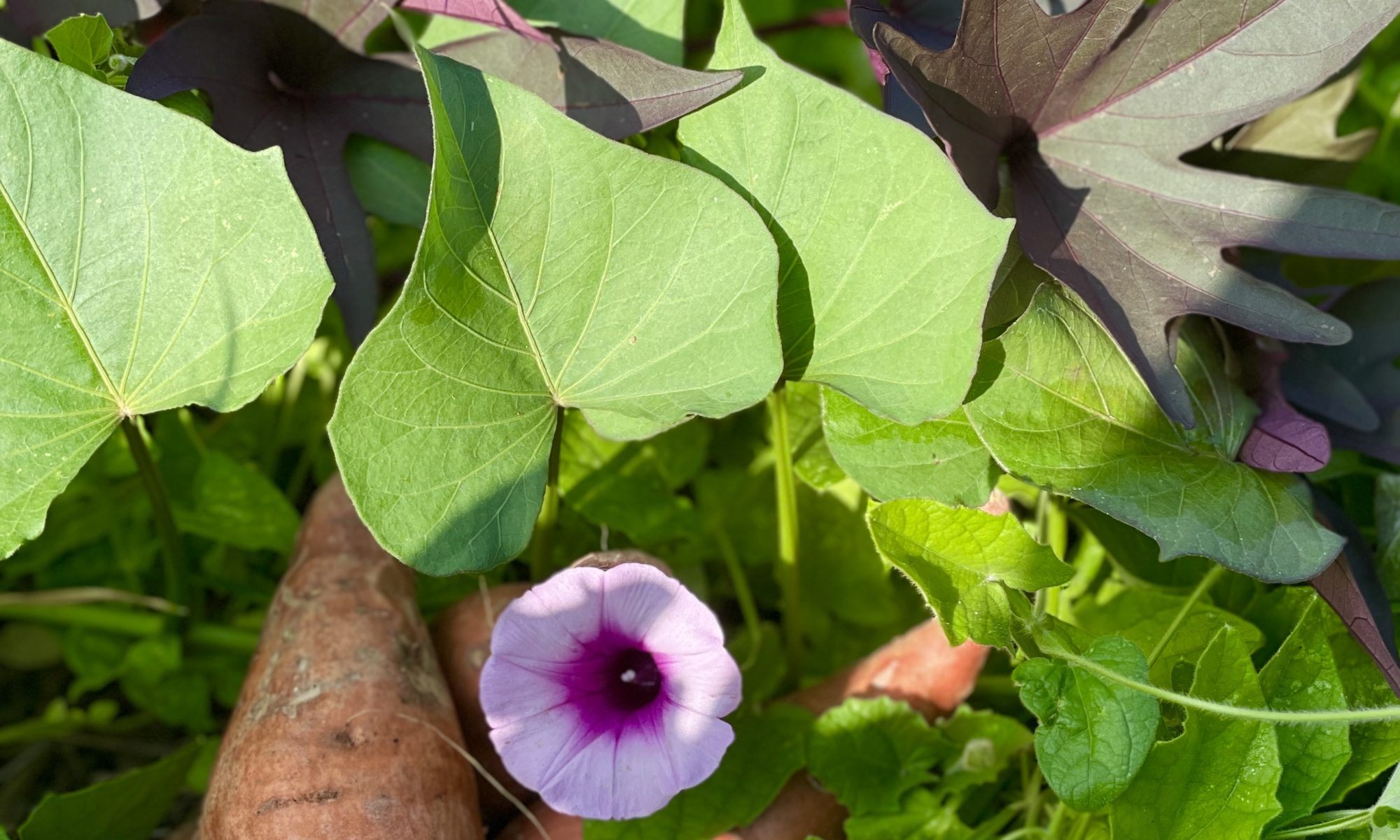
UT Gardens’ September 2022 Plant of the Month
Submitted by Holly Jones, Horticulturist, University of Tennessee Gardens, Knoxville
Delicious, nutritious and easy to grow, sweet potatoes (Ipomoea batatas) are a good choice for Tennessee gardeners with a sunny space and the desire to “grow your own.” The long, humid days of summer in the Southeast are perfect for this vigorously vining root crop that features edible leaves and charming funnel-shaped flowers that come in shades of pink and purple.
Sweet potatoes grow so well in Tennessee, in fact, that Weakley County in West Tennessee is central to the crop’s production across the United States. In the 1950s and 60s, five companies in the county produced more than 10 million sweet potato slips. Slips are the rooted cuttings from which sweet potatoes are generally grown. Today while only the Steele Plant Company remains, this family-owned and operated company shipped more than 3 million slips this year to locations throughout the continental U.S. Another fun fact to know is the town of Gleason, Tennessee, is known as Tater Town and annually hosts a festival called the Tater Town Special on Labor Day weekend.
So how do you produce taters of your own? Whether you purchase them from a local grower, get them from your neighbor or order them online, the ideal planting time is between May and June, which allows for a 3-5 month growing period before cool weather sets in. Slips planted later in the season may still produce, but the yield will be smaller. Plants that are put in the ground too early may suffer from cool soil temperatures. While no special soil preparation is required in the average garden, the tubers will be larger and more perfectly shaped if the soil is deep and well drained with a moderate level of fertility. Side dress with a general all-purpose fertilizer about a month after planting if desired.
Harvest at the end of the growing season before the first deep frost by cutting back the vines and lifting the roots out of the ground with a small shovel, potato fork or your hands. At the UT Gardens, Knoxville, we do our best to find children to help with this part. Harvesting the sweet potato patch is like digging for gold! Kids love it. Once all the tuberous roots have been found it’s important to start the curing process. This is a process that increases the sugar content and gives the sweet potatoes a longer storage life. After brushing off most of the soil, store them in a dark area at 80-85 degrees Fahrenheit and 90% humidity for about a week. After this they should be stored in a low humidity area between 50-60 degrees Fahrenheit.
For detailed information on growing sweet potatoes in Tennessee, please see UT Extension Publication D71 “Sweet Potatoes for the Tennessee Vegetable Garden.” The publication is available online.
There are thousands of different kinds of sweet potatoes from which to choose. Common varieties like ‘Beauregard’ and ‘Jewel’ will grow rapidly, sending vines out as long as 16 feet in one season. If space is an issue, try growing them up a trellis, regularly trim back the vines to keep the plants in check or choose a bush variety such as ‘Vardaman’. Treasure Island is a new series commercially available from Burpee that includes three varieties with deep purple or chartreuse leaves. We are experimenting with the purple-leaved ‘Manihi’ at the UT Gardens, Knoxville, this summer with great success so far. You can see them growing outside the Kitchen Garden.
The UT Gardens includes plant collections located in Knoxville, Crossville and Jackson. Designated as the official botanical garden for the State of Tennessee, the collections are part of the UT Institute of Agriculture. The Gardens’ mission is to foster appreciation, education and stewardship of plants through garden displays, educational programs and research trials. The Gardens are open during all seasons and free to the public.